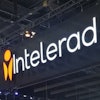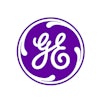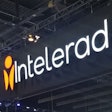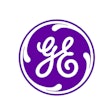If you’ve been around the PACS industry for a while, you’ll undoubtedly remember DR Systems, a vendor that launched in the early years of PACS and carved out a niche as an independent firm for over two decades.
Its founder, Murray Reicher, MD, has now returned to the market with the launch of Synthesis Health, a radiology workflow platform developer.
Reicher and colleagues believe their platform’s cloud-native architecture offers a compelling value proposition to radiology practices seeking streamlined workflow and greater efficiency. The Synthesis platform features several modules, including a workflow and reporting package with AI-based speech recognition capability, a diagnostic and enterprise viewer, a unified worklist with automated exam assignment, a cloud vendor-neutral archive, and a DICOM/HL7 orchestrator that facilitates intersystem communication, according to the firm.
The workflow and reporting software can be utilized as an overlay for an existing PACS, cloud archive, or disparate reporting systems. The company can also provide customers with a full PACS replacement system. Synthesis is marketing its technologies to imaging centers, hospitals, teleradiology groups, as well as OEMs.
Synthesis Health CEO Murray Reicher, MD, discusses PACS market dynamics.
Synthesis noted that the reporting software can prepopulate new radiology reports with information preprocessed from prior reports, with a default setting of “no change.”
Organized reports
Thanks to an approach the company calls “speech organization”, radiologists can dictate the report in whatever order they want to while looking at the images. After the dictation is complete, the report will be organized properly and an impression can be automatically generated thanks to the use of large language models and other techniques, said Reicher, a radiologist and the chairman, founder, and CEO of DR Systems until the firm was acquired by Merge Healthcare in 2015. Merge was subsequently bought by IBM later that year and Reicher stayed on as chief medical officer at IBM Watson Imaging until 2018.
Synthesis also highlights the system’s interface engine, which maps and standardizes radiology exams to the orders and syncs all data. What’s more, Synthesis provides customers with an implementation and training “playbook." Designed to facilitate continual performance development, this document standardizes areas across institutions such as modalities, exam types, body regions, templates, technologist forms, protocol documents, and comparison tools. As a result, AI software can be more readily deployed and radiologists can more easily read exams from different institutions, according to the vendor.
The benefits of standardizing data and precaching of images.
Synthesis is currently distributing some third-party image viewing applications for its platform and has also developed its own cloud viewer. The company's offering can access cloud or local image repositories to provide precaching of images, a particular benefit for radiologists working remotely in lower-bandwidth remote settings, Reicher said.
The firm expects to submit the image viewer for U.S. Food and Drug Administration 510(k) clearance soon and hopes to have that available by late spring or early summer, Reicher told AuntMinnie.com.
An update on the Synthesis product portfolio.
Shifting purchasing patterns
Synthesis believes the time is right for its offerings, due to the power and flexibility of cloud-native architecture, the fragmented installed base of legacy PACS ready to be upgraded, the needs of today’s radiologists, and shifting purchasing patterns.
Over the last 30 years, radiology groups seldom bought technology; most PACS networks were bought by hospitals and people who owned imaging centers, said Reicher.
But market dynamics are changing.
Although IT had been the decision-maker in PACS purchasing for many years, radiologists are now typically back in control and are looking to streamline their workflows in an environment characterized by a radiologist shortage, stress, lower reimbursements, and long hours, according to Reicher.
“And today, the pressure on efficiency is so great that more and more radiology groups themselves are saying, you know what, we have to own and control our reading platform,” he said.
Consequently, Reicher envisions that Synthesis Health's reporting software will be used by some radiology groups as an overlay for their existing PACS.
“It’s a very quick implementation, a fast way to get started and it solves a problem,” Reicher said. “Make the radiologists happy and faster. Save your group. Keep the fastest three radiologists in your group from quitting and going to work somewhere that provides them faster reading technology where they’re happier and more highly compensated.”
In addition, “... I think hospitals are waking up and saying, you know, why are we paying a separate service contract for a separate archive and a separate PACS system if in fact the radiologists are reading off of something else,” Reicher noted.
Cloud-native benefits
As a result, legacy PACS are going to be replaced with cloud computing-based offerings, he said. And Synthesis believes that cloud-native (i.e., systems that are specifically designed to work in the cloud) architecture is more flexible and powerful than systems that are cloud-enabled (i.e., legacy on-premises systems adapted to work in the cloud).
Synthesis has also secured a dozen patents for its cloud-based system related to image and report management technology, as well as AI algorithm generation, according to the firm.
In addition to Reicher as CEO, other top Synthesis Health executives include pediatric interventional radiologist and Chief Product Officer Deepak Kaura, MD, and former Royal Philips CEO Frans van Houten as chairman. Chief Technology Officer Jesse Wakley previously founded Radiologic Technology, and PACS industry veteran Josh Kaechele serves as chief revenue officer.
Synthesis is based in both the U.S. and Canada, and is off to a hot start, generating more revenue in its first 90 days than DR Systems achieved in its first five years back in the 1990s, according to the firm.



















